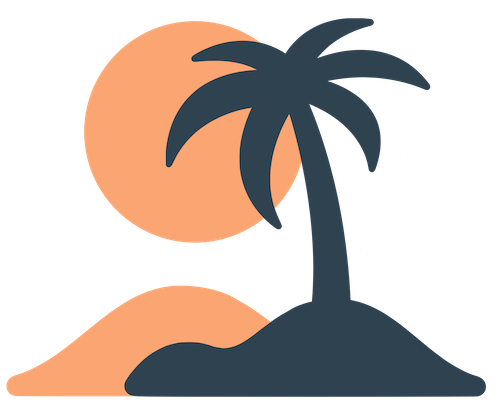Skip to main contentContent Strategy
An Oasis app is most effective when it offers fresh, relevant and well‑organized content. A thoughtful content strategy helps you avoid the pitfalls of stale pages, duplicated information and user confusion. This guide shares practical tips for planning, writing and maintaining content in your app.
Define Your Goals
Before building pages and events, take time to identify what you want your app to accomplish. Common goals include:
- Communicate important announcements to your community.
- Provide easy access to schedules, whether for weekly services or special events.
- Share sermons, podcasts or other media for on‑demand listening.
- Highlight ministries or programs and encourage involvement.
- Collect registrations and feedback via external forms or links.
Your goals will shape which page types you use and how often you update them. For example, if sharing news is a priority, setting up an Announcements page with an RSS feed will make that effortless.
Users should be able to find what they need within a few taps. To achieve this:
- Map your content – List all of the information you plan to share (e.g., service times, small group info, volunteer sign‑up, sermons, calendar, giving). Identify which pieces belong together and which deserve their own pages.
- Choose page types wisely – Use Calendar pages for schedules, Audio pages for podcasts, Webview pages for external forms and Custom pages for static or mixed content. Avoid forcing content into a single page type that doesn’t fit.
- Limit main tabs – Keep your tab bar concise (usually 3‑5 tabs). Put the most‑visited pages up front (like Home, Events, Media). Use sub‑pages and links to group less frequently accessed content.
- Create a navigation flow – Decide how users will move between pages. For example, a Home page might introduce your church and include buttons to About Us, Ministries and Give. Make sure each navigation path ends with the information or action you want users to take.
Keep Content Current
Nothing erodes trust faster than outdated information. Adopt processes to ensure your app always reflects reality:
- Assign owners – Designate one or more administrators to be responsible for each page or section. They should know when details change and update the content promptly.
- Align with existing channels – If your website or newsletter already posts news or event details, plug those sources into your app via feeds rather than duplicating manually. For example, connect your blog’s RSS feed to an Announcements page and your Google Calendar to a Calendar page.
- Review regularly – Schedule periodic audits (monthly or quarterly) to skim through every page and check for stale content or broken links. Remove or update anything that is no longer accurate.
- Communicate updates – When you post new content, consider sending a push notification to alert users. (See Notification Strategy for tips.)
Duplicated content—where the same info appears in multiple places—becomes a maintenance nightmare. Instead:
- Centralize data – Use feed‑based pages for dynamic information (calendar and news). Let external systems be the source of truth.
- Link instead of copy – If details exist on your website, embed a link or Webview page rather than copying text into a custom page. This way, an update to the website automatically appears in the app.
- Use page links – In custom pages, avoid repeating the same description. Create a single sub‑page and link to it from multiple places if needed.
[!tip]
Hidden pages: You can create pages that aren’t in your tab bar (hidden pages) and link to them from multiple locations. This is useful for one‑off topics (e.g., a detailed ministry description). Hidden pages minimize clutter but keep information available when needed.
Write Clearly for Mobile
Most users will read your content on a phone. Make it easy to digest by following these writing guidelines:
- Be concise: Use short sentences and paragraphs. Break up long sections with headings and bullet lists.
- Front‑load important information: Put the most critical details at the top of the page. If users stop scrolling after a few lines, they should still know what to do.
- Use headings and callouts: Structure pages with headings (
## Heading) to guide scanning. Use callouts ([!tip], [!gotcha]) for tips or warnings.
- Keep images optimized: Upload high‑resolution images that still load quickly. Test on cellular connections to ensure performance.
- Avoid jargon: Write for newcomers. If you must use internal terms, explain them or link to a glossary page.
Plan Your Update Cadence
Decide how often you’ll add new content or update existing information. Common patterns include:
- Weekly: Post new announcements, update the calendar, publish the latest sermon.
- Monthly: Review all custom pages, refresh images, adjust color theme if seasonally appropriate.
- Quarterly: Audit your navigation structure and ensure it still aligns with community needs. Remove outdated pages and retire old events.
Having a cadence prevents content from stagnating and keeps your community engaged. Use a shared calendar or project management tool to assign tasks and reminders.
Summary
An effective content strategy starts with clear goals, a well‑planned structure and a commitment to maintenance. By mapping your information, choosing the right page types, avoiding duplication, keeping content current and writing for mobile, you’ll create an app that serves your community well and reduces administrative headaches. Combine this strategy with thoughtful notification practices (discussed next) and you’re well on your way to a healthy, sustainable Oasis app. 